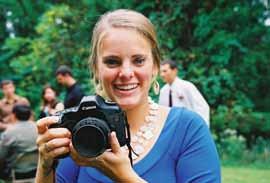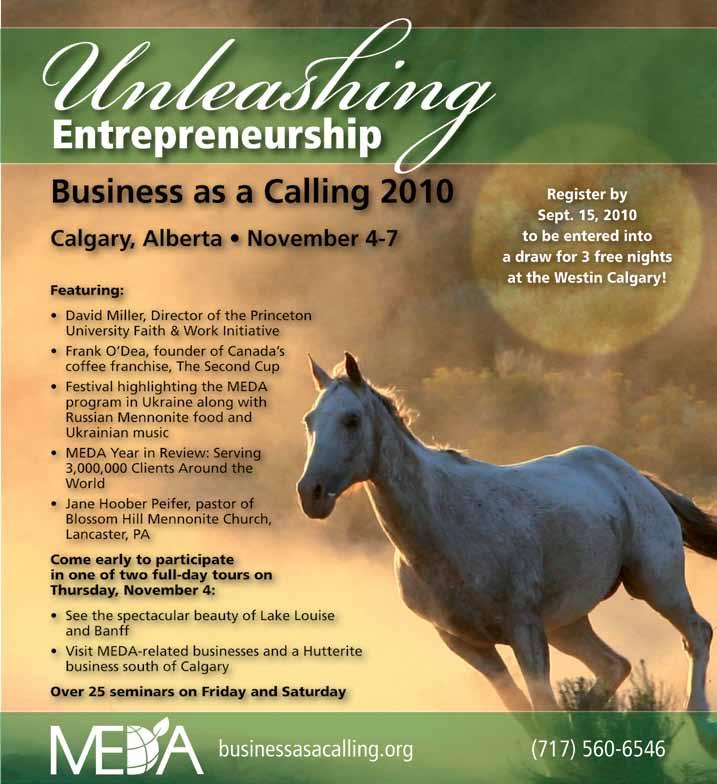
5 minute read
News
The slaves among us could work next door
“Human trafficking” is often thought to mean for the purpose of commercial sex, but that’s only half of it, according to Steven Inrig.
“It gets packaged as prostitution, but it’s more multi-dimensional,” says Inrig, who teaches ethics and health policy at the UT Southwestern Medical Center, Dallas. “Some experts say 50 percent has nothing to do with prostitution.”
An estimated 27 percent of slave trade victims work at domestic service, 10 percent are employed in agriculture, five percent in sweatshops and four percent in service industries, he said.
“It could be going on at your dry cleaners, or where you get your nails done.”
Inrig addressed journalists at the annual convention of the Evangelical Press Association in Dallas in early May. Human trafficking is EPA’s 2010 cause of the year.
He said today’s slave trade — “the ultimate commodification of life” — is the second largest criminal industry in the world, and “the U.S. is not immune to its reach.”
Trafficking was defined as “the recruitment, transportation, harboring, or obtaining of a person for involuntary labor or services by force, fraud or coercion.”
An estimated four million people are trafficked every year for a variety of purposes, such as commercial sex, agricultural work or housekeeping. Hotels are increasingly becoming an industry used for trafficking workers, he said.
He cautioned journalists to be wary of inflated statistics, noting that precise figures are hard to come by. His “safe” figure was 12 to 25 million people worldwide in some form of forced labor, with 800,000 to 900,000 of them in the U.S. According to the U.S. State Department, 14,500 to 17,500 foreign nationals are trafficked into the country each year, he said.
The most likely victims were impoverished people who lacked a social safety net. Many were recruited through addiction, indebtedness, confiscated documents and threats of violence.
Campaigns of religious and human rights groups were making a difference, said Inrig. “The numbers are improving.”
He cited initiatives on the business front, such as the Fair Trade movement which has encouraged companies to eliminate forced and high-risk sources of labor. Moreover, the chocolate industry has gotten together in an unprecedented effort to develop a cocoa protocol to cleanse its supply chain.
“All the major chocolate companies, labor unions, consumer groups, anti-child labor groups and Free the Slaves were called together to get slavery out of the cocoa product chain,” he said. “It was unique — the first time that a whole industry had committed itself to working together to remove slavery from its products.”
Individual investors, he said, could do their part. “Ask your investment manager or mutual fund or retirement account provider to ensure that your investments are fighting slavery, not feeding it.”
He praised the Socially Responsible Investment movement as being “way out in front when it comes to helping individuals and institutions to use their investments for social aims.” They do this in three ways, he said: 1. Screens to exclude offending companies. 2. Shareholder activism — investing in publicly traded companies to speak out as a shareholder and force better anti-slavery practices. 3. Community investment — investing in businesses that specifically benefit communities coming out of slavery. ◆

Third world pump saves soggy basement
When the water started rising in his Winnipeg basement during an early summer deluge, Stuart Taylor turned to a unique solution — a foot-powered irrigation pump that his organization has developed for third-world farmers.
Taylor is the executive director of Winnipeg-based International Development Enterprises (IDE), a non-profit organization that designs and markets low-cost irrigation equipment for village farmers in Africa, Asia and Central America.
His daughter was the first to alert him to the rising waters in their finished basement. “Within an hour or so, the place was a swimming pool,” Taylor says.
While he started bailing, his wife called local supply stores for a pump, but others had beat them to it and none could be found. “Why don’t you go to the office and grab a treadle pump,” she told him.
IDE’s foot-powered pump is a simple device that resembles a Stairmaster. Treadles drive two pistons that can pump water from up to six meters’ depth. IDE works with manufacturers and retailers in developing countries to establish local production and supply of pumps and other irrigation technologies.
“It’s ironic. We developed this pump so that farmers facing water scarcity can collect and apply water to their fields. In my case, there was anything but a scarcity of water,” says Taylor, who with the pump’s help managed to clear his basement.
Some homeowners in the deluged city were left without power and unable to use their electric pumps, which leads Taylor to imagine a new marketing ploy. “I see the business model as part exercise gym and part emergency response unit,” he joked afterward. “We can offer people a good aerobic workout in exchange for pumping out flooded basements. It’s a win-win.”
IDE was founded (with MEDA’s involvement) more than 25 years ago by Paul Polak, Arthur DeFehr and Gerry Dyck. Since then, more than three million families have seen their incomes double or triple as a result of IDE’s small-scale irrigation solutions and improved market opportunities. ◆
EMU grad trucks home corporate art award
Lindsey Grosh got a pleasant surprise upon returning to her York, Pa., home following graduation ceremonies at Eastern Mennonite University, Harrisonburg, Va.
Grosh, who graduated cum laude with a bachelor of arts degree in photography, learned that she was a regional winner in a nationwide contest, “Art for the Long Haul,” sponsored by Celadon Trucking Services. She received a $500 prize for a design she submitted for the company’s 25th
Photo by Jim Bishop
Lindsey Grosh
anniversary celebration.
Celadon, based in Indianapolis, is one of North America’s largest truckload carriers with some 4,000 employees and operating 3,300 tractors and 10,000 trailers.
Grosh’s winning entry, intended for display on the side of the company’s tractor trailers, was several photos of piglets from a black-and-white photography project on her family’s annual butchering weekend that she merged into a panoramic design.
“I think it’s neat that Celadon held this contest just for the sake of supporting the arts,” Grosh said.
She hopes to use her photography skills to work in a studio or for a small company in media/communications. (EMU news release)

Coming soon to a highway near you: Lindsey Grosh’s winning design in the Celadon Trucking “Art for the Long Haul” contest.







